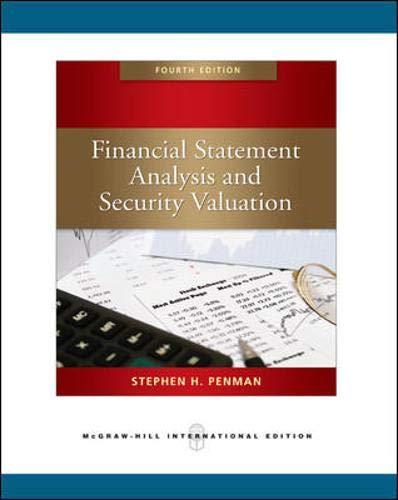Financial statements for the Procter & Gamble Co. are presented in Exhibit 9.15 in Chap- ter 9.
Question:
Financial statements for the Procter & Gamble Co. are presented in Exhibit 9.15 in Chap- ter 9. If you worked Minicase 9.1, you will have reformulated the statements in preparation for financial statement analysis. If not, do so now. Proceed to carry out a comprehensive profitability analysis for fiscal years 2006-2008 along the lines of this chapter. Figure 11.I will guide you. If you have built the reformulated statements into a spreadsheet, you might add this profitability analysis to the spreadsheet. The BYOAP guide on the book's Web site will help. You might also extend the analysis to subsequent years, as they become available, to track P&G's profitability and its drivers as the firm evolves. Your analysis should have the following features: A. Operating profitability should be distinguished from return on common equity. Apply the financing leverage equation to highlight the difference. How much leverage does P&G carry? Is the firm favorably leveraged? B. Distinguish operating income from sales from other operating income. In some years, translation gains have a big effect on total operating income. Calculate return on net op- erating assets (RNOA) with total operating income and then only with operating income from sales. C. Carry out an analysis of operating liability leverage Footnotes to the firm's financial statements reveal that its short-term borrowing rate averaged 4.2 percent (before tax) for the years 2006-2008. The firm's combined federal, state, and local statutory tax rate is 38 percent. D. Carry out a comprehensive analysis of profit margins and asset turnovers. After making the various calculations, step back and ask what they all mean. Refer to the background on P&O in Minicase 9.1 before you begin your interpretation. As a benchmark. you might compare the measures you have calculated with those for General Mills in this chapter. As a packaged food products company, General Mills is not quite a comparable company but, like P&G, it is primarily a brand management operation. Comment on the change in P&G's profitability from 2006 to 2007. Now conduct some sensitivity analysis. Ask some "what-if" questions. What would be the effect on ROCE if operating profitability fell? What would be the effect on RNOA if profit margins changed? If asset turmovers changed? How might an increase in advertising expenditures affect profitability? If you have built the analysis into a spreadsheet, you will be able to answer these questions with the press of a button. A final question: After excluding currency gains and other nonsales items from operat- ing income, the return on net operating assets is quite low. Why? Real World Connection Minicases M9.1, M12.1, M14.1 and M15.1 also deal with the analysis and valuation of Procter & Gamble. See also Exercise 3.17.
Step by Step Answer:

Financial Statement Analysis And Security Valuation
ISBN: 9780071267809
4th International Edition
Authors: Penman-Stephen-H, Steven Penman





